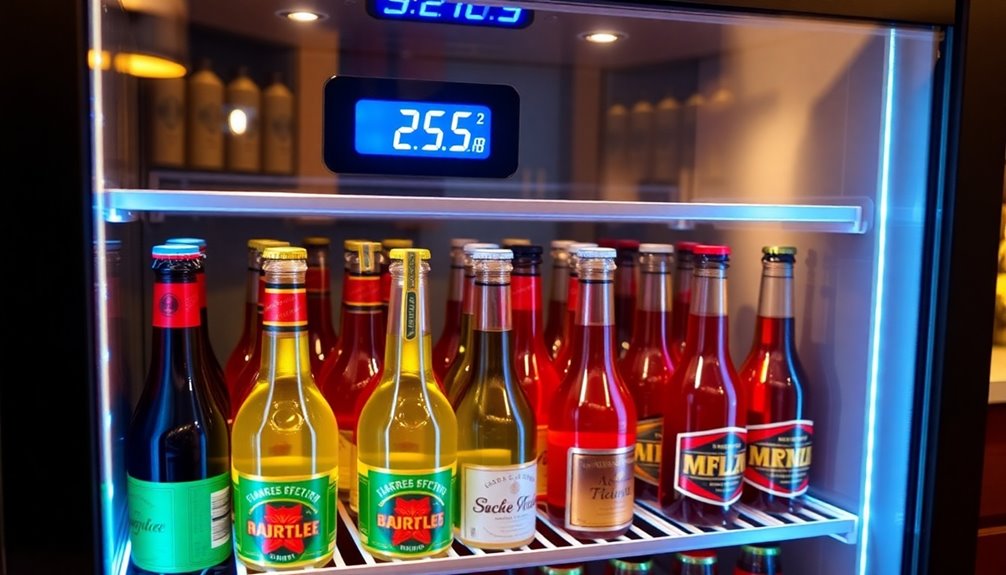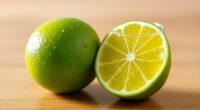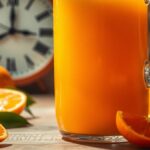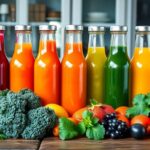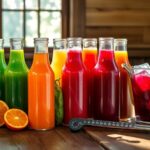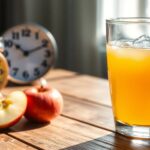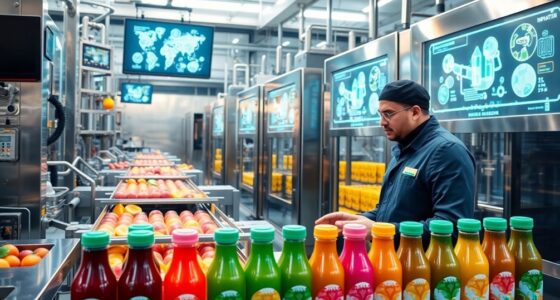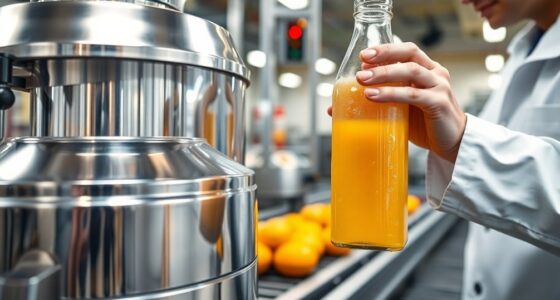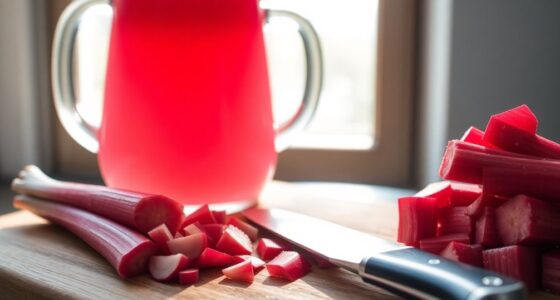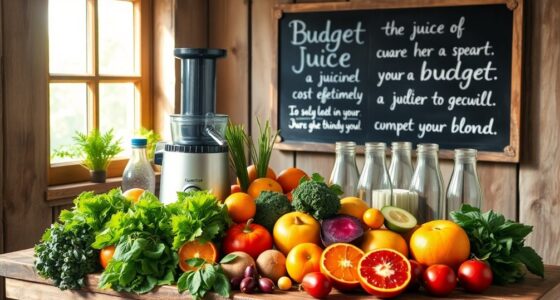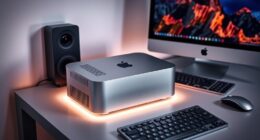Proper temperature control is essential for your beverage storage. Storing drinks at the right temps keeps their flavor and freshness while ensuring safety. For example, non-alcoholic drinks do best between 35-40°F, while red wines thrive at 60-65°F. Frequent cooler openings or overcrowding can disturb this balance and lead to spoilage. By maintaining ideal conditions, you can enhance your beverage experience. Discover how to troubleshoot common cooler issues for even better results!
Key Takeaways
- Maintaining proper temperatures prevents flavor loss and ensures freshness in beverages.
- Ideal storage temperatures extend shelf life and enhance food safety for various drinks.
- Frequent cooler openings and overcrowding disrupt temperature stability, risking spoilage.
- Regular monitoring of temperatures and airflow helps preserve drink quality.
- Proper maintenance, including cleaning and checking power supply, optimizes cooler performance.
The Importance of Temperature Control in Beverage Storage
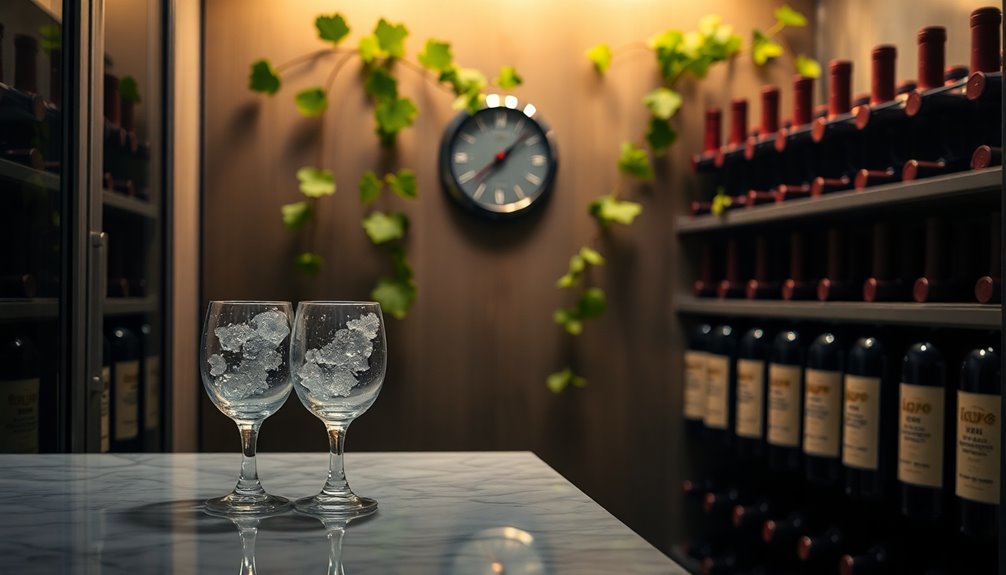
When it comes to storing beverages, understanding temperature control is essential, as improper storage can lead to loss of flavor and freshness.
Maintaining the ideal temperature for each beverage type is key to extending its shelf life and ensuring food safety. For instance, non-alcoholic drinks should be kept between 35-40°F, while red and white wines have specific recommended temperatures of 60-65°F and 45-50°F, respectively.
Proper temperature control not only enhances the quality and safety of your beverages but also aids in spoilage prevention. That's why investing in temperature monitoring systems can help you maintain those critical conditions.
Ideal Storage Temperatures for Different Beverages
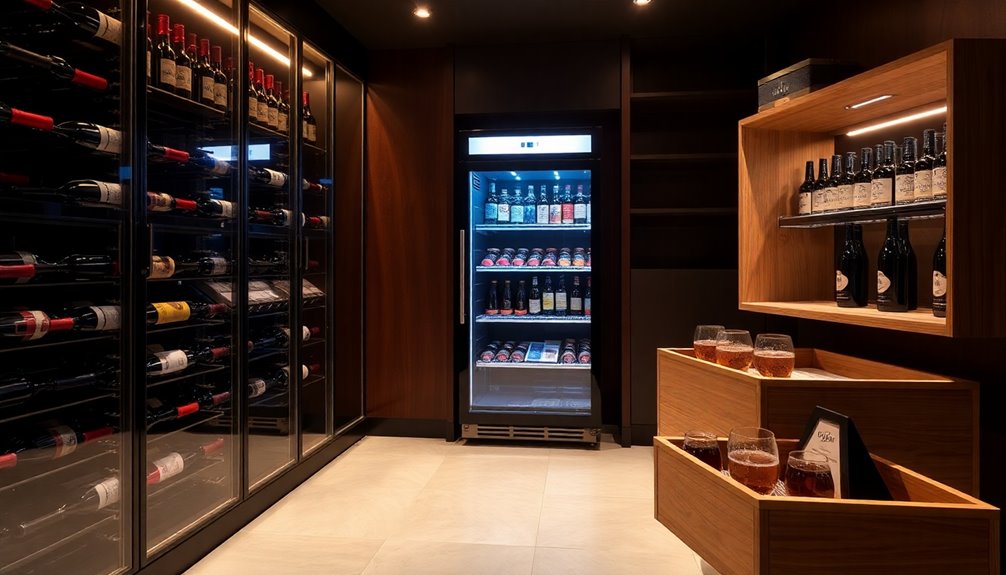
Understanding the ideal storage temperatures for different beverages can greatly enhance your drinking experience. Proper temperature settings are key in the beverage industry, ensuring peak quality and taste. For example, wines are best served at specific temperatures that can vary between red and white varieties, while craft beers often require slightly cooler settings to preserve their hoppy flavors. Knowing the optimal temperature for beverage storage not only maintains the integrity of the drink but also enhances its aroma and mouthfeel. By adhering to these temperature guidelines, consumers can fully appreciate the nuanced flavors that each beverage has to offer.
Here are some recommended temperature ranges:
- Red wines: Store between 55°F (12.8°C) and 65°F (18.3°C) for the best flavor.
- Soft drinks and sodas: Keep at 35°F (1.6°C) to 40°F (4°C) to maintain carbonation and avoid food spoilage.
- Energy drinks and juices: Aim for 40°F (4°C) to 46°F (7.8°C) for freshness.
Factors Affecting Optimal Beverage Cooler Temperatures
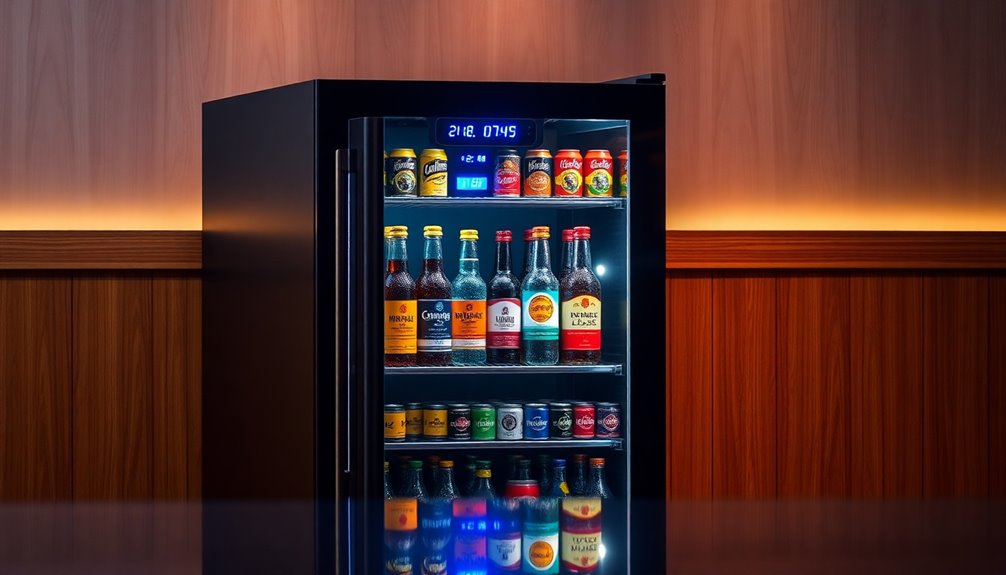
Maintaining the ideal temperature in your beverage cooler isn't solely about setting a number; several factors play an important role.
First, make sure you're aware of the best temperature range for different beverages. Beer typically thrives between 35°F and 45°F, while wines prefer 45°F to 65°F.
Additionally, frequent openings of the cooler can disrupt temperature stability, impacting cooling efficiency. Proper airflow is essential; overcrowding can restrict air circulation, leading to uneven temperatures and potential spoilage.
Finally, monitoring safe temperatures is critical to preserve the quality of your drinks. Regular use of air purifiers can also help improve overall air quality, which may enhance the storage environment for beverages.
Best Practices for Maintaining Proper Beverage Storage Conditions
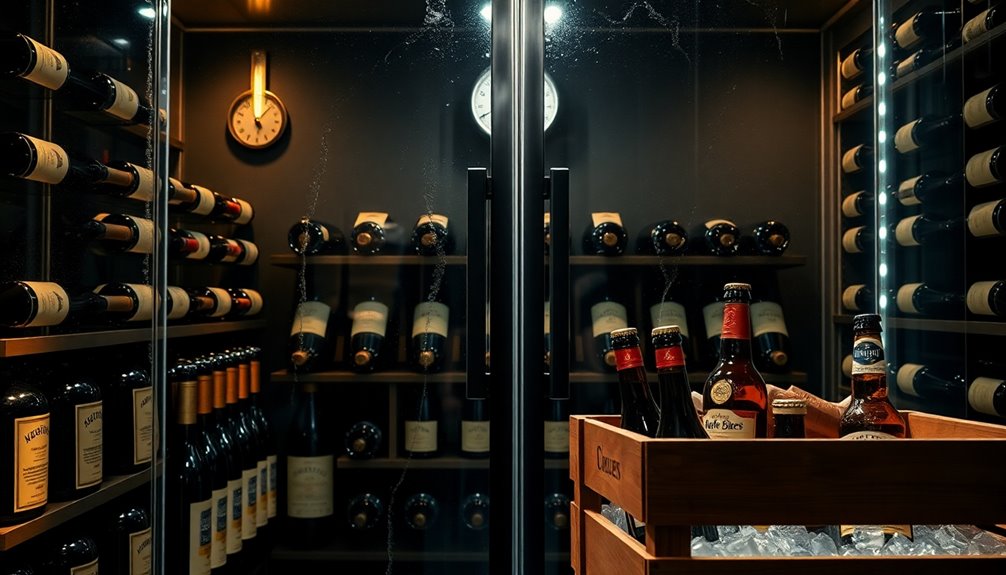
To guarantee your beverages stay fresh and flavorful, it's essential to follow best practices for proper storage conditions. Here are three key tips:
- Set the Ideal Temperature: Keep your beverage coolers between 35°F (1.6°C) and 38°F (3.3°C) for maximum freshness, especially for non-alcoholic drinks.
- Monitor Temperatures: Use a reliable thermometer to regularly check storage temperatures and make necessary adjustments to maintain quality.
- Ensure Air Circulation: Avoid overcrowding your cooler, as proper air circulation helps prevent temperature fluctuations that can spoil your beverages.
Troubleshooting Common Issues in Beverage Coolers

Even with best practices in place, issues can arise that affect the performance of your beverage cooler. If it fails to maintain ideal temperatures, start by checking the accuracy of the temperature gauge.
Overcrowding can hinder airflow, so assess your cooler's contents and avoid overstocking to guarantee efficient cooling.
Regular maintenance is vital; clean the compressor and condenser coils to eliminate dust and debris affecting performance.
Watch for ice buildup inside the cooler, as it restricts airflow. Remove any accumulation and check that the door seals properly to prevent warm air entry.
Finally, confirm the power supply is stable by verifying that the outlet functions correctly and looking for any frayed cords that could disrupt cooling.
Frequently Asked Questions
Why Is Temperature Very Critical During Storage?
Temperature's critical during storage because it directly affects the quality and safety of your beverages.
If you don't keep drinks at the right temperatures, they can spoil or lose their flavor. For instance, soft drinks and juices thrive between 35°F and 40°F, while wine needs a warmer range for aging.
Monitoring temperatures prevents bacterial growth too, ensuring you enjoy the freshest and safest beverages.
Why Should Drinks Be Stored at the Correct Temperature?
Storing drinks at the correct temperature is like keeping a delicate flower in the right sunlight—too much or too little can ruin it.
You want your beverages to taste their best, and the right temperature preserves that flavor. It prevents spoilage and maintains freshness, ensuring every sip is enjoyable.
Whether it's soda, wine, or beer, correct storage temperature enhances your experience and keeps your drinks safe from foodborne illnesses.
What Temperature Should a Beverage Cooler Be At?
A beverage cooler should ideally stay between 35°F (1.6°C) and 38°F (3.3°C) to keep your drinks perfectly chilled without freezing.
If you're storing soft drinks, aim for a range of 40-42°F, while red wines do best at 60-65°F.
Make certain not to overcrowd your cooler; this can block airflow and create inconsistent temperatures.
Regularly check the internal temperature with a reliable thermometer to guarantee everything stays fresh and enjoyable.
Why Are Proper Holding Temperatures Just as Important as Proper Cooking Temperatures?
Imagine sipping a drink that's gone bad—yikes! Proper holding temperatures are just as essential as cooking temperatures because they prevent harmful bacteria from thriving.
When you keep beverages at the right temperature, you're preserving their flavor and crispness. Just like cooking meat guarantees it's safe to eat, maintaining cold temps for drinks protects you from spoilage and health risks.
Conclusion
In the world of beverage storage, "an ounce of prevention is worth a pound of cure." By keeping your drinks at the right temperature, you not only enhance their flavor but also extend their shelf life. Remember to regularly check your cooler and adjust settings as needed to avert spoilage. With a little attention, you can guarantee your beverages stay fresh and enjoyable for every occasion. So, don't underestimate the power of proper temperature control!
Cindy thoroughly researches juicing trends, techniques, and recipes to provide readers with practical advice and inspiration. Her writing style is accessible, engaging, and designed to make complex concepts easy to understand. Cindy’s dedication to promoting the advantages of juicing shines through her work, empowering readers to make positive changes in their lives through the simple act of juicing.

